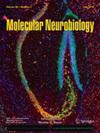基于竞争性内源性 RNA 的与脊髓损伤相关的潜在非编码 RNA。
摘要
本研究旨在阐明关键调控分子,特别是信使RNA(mRNA)、长非编码RNA(lncRNA)和microRNA(miRNA)及其在脊髓损伤(SCI)的发生和发展中的作用。SCI 的表达谱(GSE45006、GSE19890 和 GSE125630)来自基因表达总库(GEO)数据库。通过比较不同时间点患 SCI 的大鼠和未患 SCI 的大鼠,我们确定了差异表达的 mRNAs(DEmRNAs)、lncRNAs(DElncRNAs)和 miRNAs(DEmiRNAs)。GSE45006 数据集有助于产生 DEmRNAs,然后使用 Mfuzz 对其进行聚类。随后,我们构建了蛋白质-蛋白质相互作用(PPI)网络,并预计了 miRNA-mRNA 和 lncRNA-mRNA 之间的相互作用对。这些配对有助于形成涉及 lncRNA-miRNA-mRNA 相互作用的调控网络。此外,我们还对这些基因网络中的 DEmRNA 进行了功能富集研究。利用 GSE45006 数据集共鉴定出 2313 个 DEmRNA,以及来自 GSE19890 的 111 个 DEmiRNA。我们从 GSE125630 中提取了 154 个 DElncRNA 和 2322 个 DEmRNA。我们的分析发现了294个上调的DEmRNA,它们组成了上调集群,407个下调的DEmRNA组成了下调集群。我们发现了PPI网络中的关键枢纽基因,如Rhof、Vav1、Lyz2、Rab3a、Lyn、Cyfip1、Gns和Nckap1l。此外,该研究还成功构建了一个竞争性内源性RNA(ceRNA)网络,发现了55对独特的lncRNA-miRNA-mRNA连接对。我们的研究建立了一个与SCI相关的ceRNA网络,确定了与该疾病的发病和进展密不可分的几个关键lncRNA-miRNA-mRNA连接对。值得注意的是,我们观察到了一些重要的关联,包括 AABR07041411.1-miR-125a-5p-Slc4a7 和 Smg1-rno-miR-331-3p-Tlr4 对,它们在这一生物学背景下产生了重大影响。

This study aims to elucidate the key regulatory molecules, specifically messenger RNAs (mRNAs), long noncoding RNAs (lncRNAs), and microRNAs (miRNAs) and their roles in the development and progression of spinal cord injury (SCI). Expression profiles (GSE45006, GSE19890, and GSE125630) for SCI were sourced from the Gene Expression Omnibus (GEO) database. By comparing rats with SCI at various time points against those without SCI, we identified differentially expressed mRNAs (DEmRNAs), lncRNAs (DElncRNAs), and miRNAs (DEmiRNAs). The GSE45006 dataset facilitated the production of DEmRNAs, which were then clustered using Mfuzz. Subsequently, we constructed a protein-protein interaction (PPI) network and anticipated interaction pairs between miRNA-mRNA and lncRNA-mRNA. These pairs were instrumental in forming a regulatory network involving lncRNA-miRNA-mRNA interactions. Additionally, we conducted functional enrichment studies on the DEmRNAs within these gene networks. A total of 2313 DEmRNAs were identified using the GSE45006 dataset, alongside 111 DEmiRNAs from GSE19890. From GSE125630, we extracted 154 DElncRNAs and 2322 DEmRNAs. Our analysis revealed 294 up-regulated DEmRNAs, grouped into the up-cluster, and 407 down-regulated DEmRNAs, forming the down-cluster. Key hub genes in the PPI network, such as Rhof, Vav1, Lyz2, Rab3a, Lyn, Cyfip1, Gns, and Nckap1l, were identified. Additionally, the study successfully constructed a competing endogenous RNA (ceRNA) network, revealing 55 unique lncRNA-miRNA-mRNA link pairs. Our research established a ceRNA network associated with SCI, identifying several critical lncRNA-miRNA-mRNA connection pairs integral to the disease's onset and progression. Notably, significant associations, including the AABR07041411.1-miR-125a-5p-Slc4a7 and the Smg1-rno-miR-331-3p-Tlr4 pairs, were observed to exert a significant influence within this biological context.

 求助内容:
求助内容: 应助结果提醒方式:
应助结果提醒方式:


